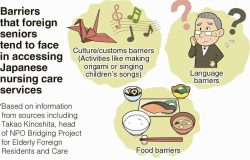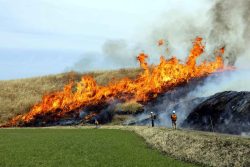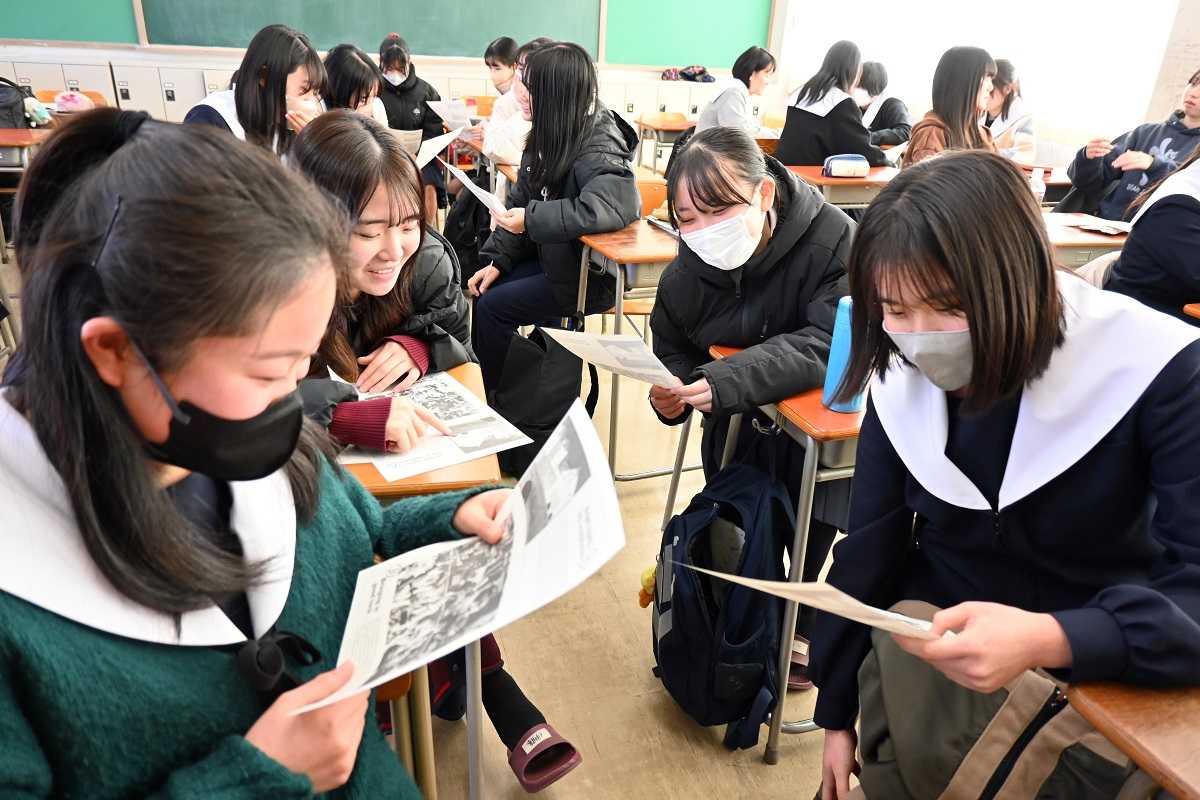
Students pair off and relate the content of articles in The Japan News to their class partners at Aichi Prefectural Zuiryo High School on Feb. 7.
14:52 JST, February 21, 2024
Students at Aichi Prefectural Zuiryo High School are using a wide variety of articles from The Japan News in their English classes, under the guidance of Vice Principal Akio Kaneko.
Last year, Kaneko drew on his 20 years of experience teaching English to write a report titled “English Newspapers Are a Treasure Trove of Learning — with The Japan News” carried in the journal of his prefecture’s high school English education association. The report was eventually reprinted in the journal of the national federation and presented to many English educators nationwide.
I visited Zuiryo High School in Mizuho Ward, Nagoya, to see how our articles are utilized in the classroom.
I arrived at the school, about 30 minutes by subway from Nagoya Station, on Feb. 7. Walking along the corridors, I heard the energetic voices of students in their classrooms and recalled my own days in high school.
When I entered the food faculty classroom with Kaneko, the representative student signaled for the entire class of about 30 to stand up and loudly say, “Yoroshiku onegai shimasu! (Thank you for the lesson!)” Then the class began.
Kaneko distributed an A4-size sheet of paper containing two articles from The Japan News — one was about the Sapporo Snow Festival, while the other article was about the traditional Japanese event of Setsubun. The students paired off, decided which article each would read and began reading silently.
After a few minutes, each student described to the other in Japanese the content of the article they had read. Kaneko wrote English expressions from each story on the blackboard and explained them at the end.
One was “Station lit with projection mapping.” Kaneko told the class: “Station is described by the word that follows it. This type of expression is common in English.”
Kaneko conducts this kind of lesson in the first 5-10 minutes of each class, followed by a general lecture.
“It’s interesting to read [the articles] because it’s news about Japan,” one of the students told me. Another student said, “Even though it’s news about Japan, it is interesting to learn English-like phrases.”
Many of them also responded favorably to a questionnaire that Kaneko collected from the students prior to the class. Comments included: “I can learn practical English expressions” and “It’s fun to learn both the news and English at the same time.”
Meanwhile, many students said the words were difficult, and some wished they could also have The Yomiuri Shimbun articles on which the English articles were based.
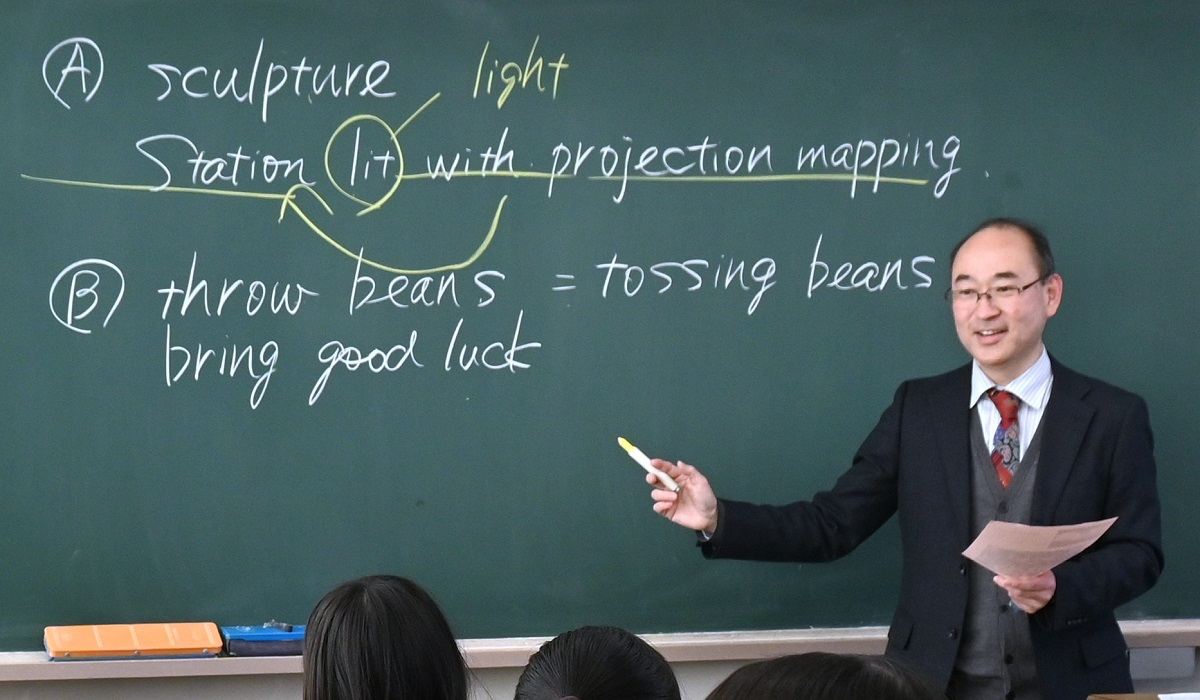
Vice Principal Akio Kaneko explains English expressions from the articles.
Expressing Japan in English
“The advantage of using English newspapers published in Japan is that students can learn how to talk about traditional Japanese events such as Setsubun and current news in English,” said Kaneko. He added with a smile, “I read a lot of newspapers to find articles for the students.”
Kaneko has subscribed to English newspapers since his own high school days. He began using The Japan News (then The Daily Yomiuri) about 20 years ago in the English classes he taught, believing it would add variation and be useful for his students.
In the report published in the journal, Kaneko cites the following factors in choosing subjects: articles should basically be from that day’s newspaper; difficult articles with lots of technical terms should not be used; and a variety of topics should be covered to meet the interests and concerns of students.
Inspiring students
Zuiryo High School is 117 years old and one of the leading schools in Aichi Prefecture. Some of its students go on to study at famous universities such as Nagoya University, the University of Tokyo and Waseda University.
One of its graduates is Chiune Sugihara, a diplomat who issued visas to many Jews in Lithuania during World War II. On grounds adjacent to the school is the Sempo Sugihara Memorial, an outdoor facility with panels explaining his history and bronze statues on display.
Sempo is an alternate phonetic pronunciation of Chiune and was often used by foreign people to refer to Sugihara. The mamorial was completed in 2018 and has been visited by many people, including the U.S., Israeli, and Lithuanian ambassadors to Japan.
It can be visited freely at any time, as it is located outside the school grounds. Scanning a QR code with a smart phone allows visitors to listen to an English audio guide.
Kaneko was transferred to Zuiryo High School last year, and said he can feel the students’ strong enthusiasm for learning English. “I like the analog aspect of newspapers, but tablets are also beginning to be used at schools. I want to take advantage of the best elements of both and continue to use the English newspaper in my classes,” he said.
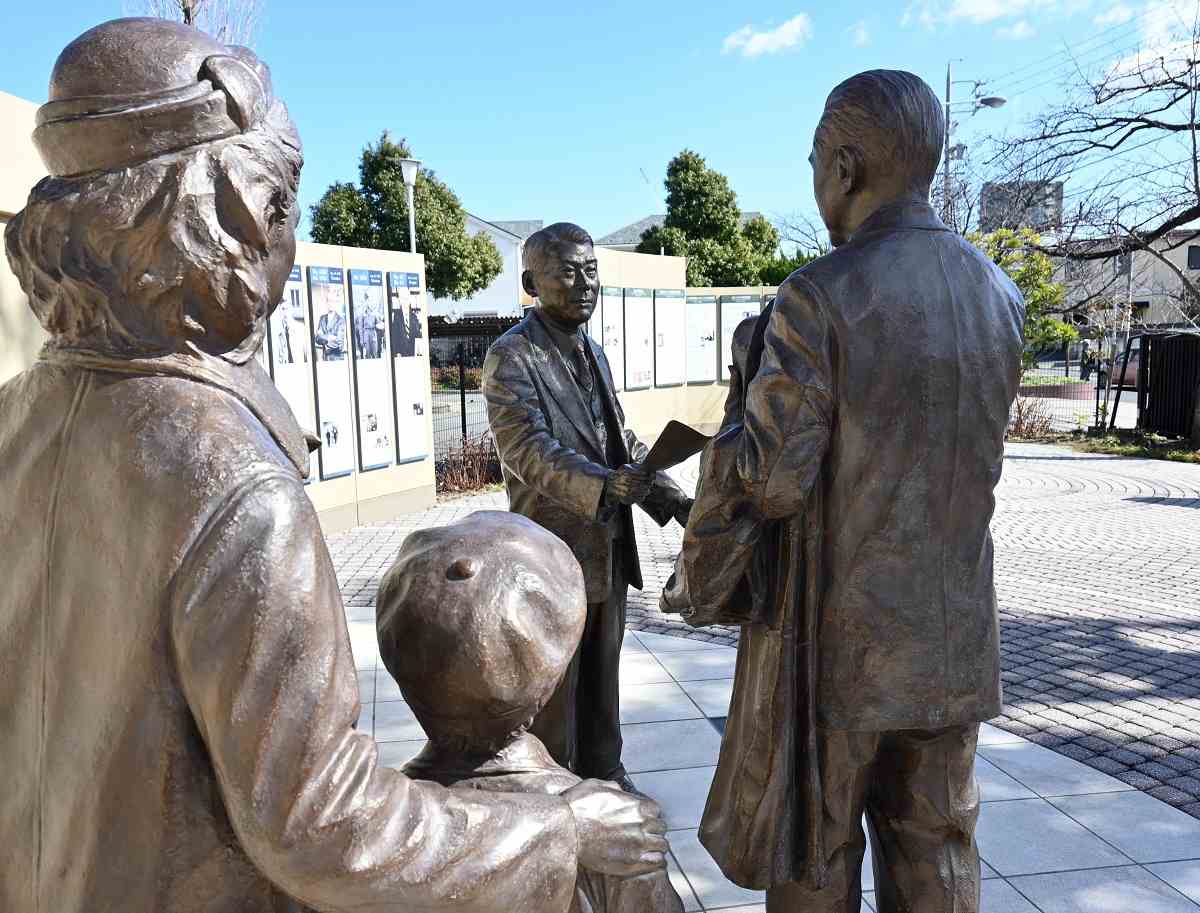
A bronze statue of Chiune Sugihara stands in the Sempo Sugihara Memorial square adjacent to Zuiryo High School.
"JN Specialities" POPULAR ARTICLE
-

The Japan News / Weekly Edition (12/12-12/18)
-

English-language Kabuki, Kyogen Entertain Audiences in Tokyo; Portland State University Professor Emeritus, Graduates Perform
-

Noodle Dining Shunsai / Rich Oyster Ramen to Savor at Odasaga; Experienced 68-year-old Owner Creates Numerous Ramen Varieties
-

The Japan News / Weekly Edition (12/5-12/11)
-

People Keep Loved Ones’ Ashes Close in Special Jewelry, Small Urns as Unique Way to Memorialize Them
JN ACCESS RANKING
-

Keidanren Chairman Yoshinobu Tsutsui Visits Kashiwazaki-Kariwa Nuclear Power Plant; Inspects New Emergency Safety System
-

Imports of Rare Earths from China Facing Delays, May Be Caused by Deterioration of Japan-China Relations
-

University of Tokyo Professor Discusses Japanese Economic Security in Interview Ahead of Forum
-

Japan Pulls out of Vietnam Nuclear Project, Complicating Hanoi’s Power Plans
-

Govt Aims to Expand NISA Program Lineup, Abolish Age Restriction


